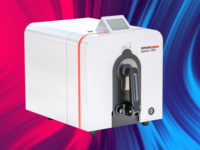Securing a SmartPrefix Makes Your Products `Visible' to the World

Since its 1999 founding, the Electronic Commerce Code Management Association (ECCMA) has had a profound impact across numerous industries, from mining, oil and gas to construction, manufacturing and healthcare.
The not-for-profit international association of data quality managers and application providers has developed ISO 8000 and ISO 22745, the international standards for data quality, and the exchange of material and service master data. In addition, ECCMA oversees the rollout of the SmartPrefix.
Below is a Q&A synopsis with Peter Benson, ECCMA founder and executive director.
Q: Why is it important for manufacturers to register a SmartPrefix?
A: It's a key component of making your products visible to the world. It makes business sense for manufacturers to ensure that the parts they make are linked back to them - and that kind of unique identification is at the heart of a SmartPrefix.
For many years, manufacturers have been issuing part and serial numbers. Now, adding a SmartPrefix number in front of those numbers has the same effect as a country code for international phone calls - it creates a connection that can mean the difference between success or failure in the global sphere of supply chain logistics.
It amounts to money in the bank - in the same way that all quality data can result in a reduction in operating costs and an increase in sales.
Q: Can you provide a scenario that helps illustrate SmartPrefix in action?
A: Let's say you own a company by the name of Acme Products. You make a widget that is composed of 20 parts. Each of those parts is essential to the entire widget's construction. Over time, any of those parts could wear out, get damaged or otherwise lose its effectiveness.
For an end user of yours who may not even be aware of your existence because its interactions are with someone else in the supply chain it is now time to get a replacement part.
But they didn't buy that part on its own. Instead, that end user acquired it as part of a "package deal" of all the parts that, all together, amounted to the widget. Now, what can they do?
Trace it back to Acme Products and order the part as long as the manufacturer had identified each of the parts and included in that ID is the SmartPrefix name that "makes them visible" to the end user.
Q: What is a common problem that has made the development of SmartPrefixes so necessary?
A: In many cases, the companies or organizations that issue identifiers for their parts make a false assumption: that the format of their identifier is so unique that "everyone implicitly knows" that they issued it. But if they do not explicitly identify their organization, then they are opening the door to real problems.
When an organization goes to the effort of creating an identifier for its parts, then it should take the simple, but often-overlooked, extra step of making it a quality identifier. That's where the SmartPrefix comes in.
Q: What is the basis for the SmartPrefix?
A: ISO 8000-115 is the basis. It defines a simple format for creating quality identifiers, where the organization that issued the identifier is itself identified using a prefix placed in front of the identifier it issued.
It is the same principle used in email addresses, but the ":" symbol is used after the SmartPrefix instead of the "@" symbol before the email domain name.
Let's use a fictitious company by the name of Gidgets and Gadgets Aplenty, Inc. Their SmartPrefix is GidgetsGadgetsAplenty and manufactures a Dinglehopper that it has assigned the part number of 756234. That part, formatted in accordance with ISO 8000-115, would start with the SmartPrefix followed by a colon followed by the part number. Here's how it would appear: GidgetsGadgetsAplenty:756234.
A SmartPrefix tells the user who issued an identifier for a part, service or organization, while also enabling the user to know who to ask (the issuer of the identifier) to learn more about the part, service or organization. By placing the SmartPrefix in front of the
identifier, it is now globally unique, and the user immediately knows the identity of the authority. The user can then reach out to the issuer of the identifier to ask for information on the attributes or to find out how to purchase it.
Q: What does a SmartPrefix look like?
A: ECCMA has built a central registry of ISO 8000-115 identifiers, the ECCMA Prefix Name Server (ePNS). The ePNS allows owners to register simple strings that can be used as prefixes to their identifiers.
Here are a few examples: eOTD:0161-1#01-068756#1; NSN:4820-01-0130242; PARKER:4Z-MB4LPFA-SSP. These prefixes are globally unique and the ePNS contains details of the current owner of the identifier as well as the resolution addresses where the data associated with the identifier can be obtained.
Q: How can a company secure its own SmartPrefix?
A: That can be done at https://www.smartprefix.org/ There's an annual $500 fee to register a SmartPrefix and it comes with an associate ECCMA membership.
For more information about ECCMA, visit https://eccma.org/.
For more information about SmartPrefix, visit https://www.smartprefix.org/.
Looking for a reprint of this article?
From high-res PDFs to custom plaques, order your copy today!








